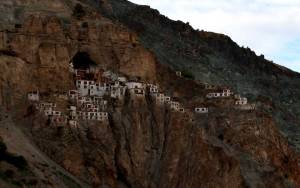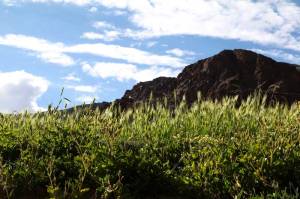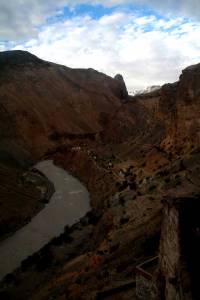You should know before you leave Kargil that Zanskar is known for trekking and monasteries. That’s it. Treks are pointless. If you aren’t into Buddhism or architecture, monasteries are too. But you feel you must visit Zanskar once. Just so you’ve been there and built its tourism nerves to some level of solidity, or just so you want to go to a place which can actually do with an increase in the number of people living there at one given time. You can either do a long 8-10 day trek, which we’ve sort of established as pointless, or visit every monastery in the area. That will mean a long time spent away from malls and multiplexes.
There is one way to do everything that represents the whole idea of Zanskar, within 2 days. Unfortunately, you need to both trek and visit a monastery.
What do they know of Zanskar who only Ladakh know
Zanskar is what you think you want to visit and like, but actually end up secretly hating. You can do strenuous treks on pristine mountains, marvel at the remarkable architectural achievements made for Buddhism, meet wonderful people who still lay their kitchen out in exquisite geometrical and aesthetic order or just laze around as a variety of clouds drifts along. It doesn’t take long for it to be all too boring.
The Phuktal monastery in Zanskar is an extreme example of the region’s aloofness. It was built, like many things here, ages ago. Monks thought it wise to pitch tent as far away from life as possible. They must have walked a lot to get to where Phuktal is now. You have to walk a lot even now to get there. This place is a confirmation of what single mindedness can achieve. There is no way anyone unsure would’ve come anywhere close to here. It is said the aloofness was to keep off predators, human ones. One lama showed holes in a door, apparently caused from artillery owned by Genghis Khan. Talk of single mindedness.
This year (2013), the road to Phuktal is motor-able (sort of) upto Anmu. Earlier it was only upto Raru (a two-day trek away). You’ll see at least three monasteries on this route. Bardan, Mune and Ichar. Bardan is spectacular, built on a solid piece of rock in a river. Mune is more conservatively located. Ichar’s is beautiful. But none of these come close to the madness of Phuktal.
The trek from Anmu is not easy. Don’t listen to the locals. They walk this distance for breakfast. It is tough if you aren’t a regular trekker. The path is at best nominally laid. There are stretches between Cha and Phuktal which are quite risky if you are struggling with dehydration. So carry two bottles of water. Keep filling up as you use and go. You can break this trek up into two days, but then it won’t be much work. It takes close to six hours from Anmu to Phuktal. Cha is your lunch station. It would seem four hours into the walk that it is all pointless. You’ll probably be right, but it’s better to do the forward two hours than backward four hours. After walking on multi-coloured mountains along some part of the Padum-Manali trek route, you’ll reach the Phuktal guesthouse. This is where you’ll also catch the first sight of the monumental monastery inscribed into a cave.
If you were to list crazy things people have done with pure civil engineering techniques, Phuktal must rank somewhere high up. Like most monasteries, it’s high up in a mountain. Even from the guesthouse it is a 20-minute walk up to it. Somebody had to carry stones up this path and someone had the responsibility to make sure it was built. That’ll take a few years in today’s times. It must’ve used many people’s lifetimes then. For all the expansiveness you assume from a distance, the monastery is quite compact at closer view. A dog keeps watch as you make your way past a few steep curves leading up to the gate. There are rooms for the resident monks, prayer rooms and a rather weird toilet.
Toilets don’t need no flush in Zanskar
It may take a chapter to work through the toilet system in Zanskar, but for brevity’s sake, assume they’ll be a bit disappointing. The one in Phuktal though is… dare I say, fun. In most small guesthouses or home stays, you’ll find a hole where you make your statement and fill it up with mud. This can smell. In Phuktal, the hole leads to a deep drop which eliminates the smell of everything that falls into it. It is literally cathartic.
The monk’s rooms are basic. There are Buddha idols and Dalai Lama’s photos everywhere. Some may also have a small space for a smaller kitchen; beds and blankets, some reading material owned by the monks and many things to remind you that it’s a room for the religious. It is best to stay in a monk’s room. You have to pay a small amount but the view from there can be spectacular. Also, people there are quite nice. For food though, the guesthouse is a better option (the only option if you haven’t packed). Stay in the monastery, eat in the guesthouse sounds like good advice.
Another option if a six-hour trek is not possible: Purne. This is a place lower down Phuktal (but closer to Cha and on the Padum-Manali trek route). It is a stopover for the trekkers and it can be one for you too. You can stay in Purne and do a 2-3 hour trek each way. But really, look at the view here and say you don’t want to stay in the monastery!



